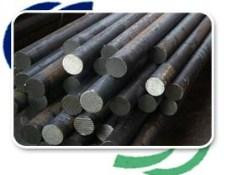At the most fundamental, steel is created by mixing carbon and iron at very elevated temperatures (above 2600°F).Primary steelmaking creates steel from a commodity called “pig iron.” Pig iron is smelted iron, from ore, which includes more carbon than is exact for steel.

The steelmaker uses a policy that bubbles oxygen through melting pig iron. This procedure establishes equal oxidisation throughout the molten metal. Oxidisation reduces excess carbon. It also vaporises or binds adulterations made of components like silicon, phosphorus, and manganese.
Secondary steelmaking is accomplished “in the ladle.” It is a procedure of refining and alloying steel. Secondary steelmaking can commence by melting ST 52 Pipe or proceeds with a primary procedure. Elements can be calculated to get a particular alloy. The steelworker can also eliminate surface adulterations (de-slagging). The ladle is heated and refrigerated to the temperatures desired for the necessary chemical procedures.
Iron, the major basic component of ASTM A672 Pipe, is one of the greatly plentiful components in the earth’s crust. All steel alloys are largely iron and 0.002–2.1 % carbon by weight. In this spectrum, carbon bonds with iron create a strong molecular hierarchy. The resulting lattice microstructure helps attain certain material properties, like tensile stamina and hardness, that we rely on in steel.
Although all steel is formulated of iron and carbon, various types of steel contain several percentages of each component. Steel can also encompass other elements like nickel, molybdenum, manganese, ASTM A106 Grade B, boron, ASTM A53 Grade B, or ASTM A333 Grade 6. Adding various elements to the “recipe” for a steel alloy influences its material properties. The technique of work and therapy of the steel further enhances those abilities.One notable group of steel alloys contain chromium. All such alloys are recognised commonly as stainless steel.
In a foundry, Stainless Steel Round Bar manufacturer in India is sand or enterprise cast into patterned silhouettes. In a steel mill, steel is cast by a continual caster into raw house materials. Continuous casters establish formalised raw steel shapes rather than near-finished portions. Raw steel will be machined or helped into final commodities. Alloy Steel Round Barcommonly cast and shape sheets, billets, bars, blossoms, pipes, ingots, and wires.
A mill may also hot-roll or cold-roll steel during its production. These procedures create various shapes and textures. Before shipment, the steel might be cut, spooled, or bundled before leaving the mill.In a foundry or Carbon Steel Round Bar manufacturers in Indiamay be heat treated. Final strides like alleviating, hardening, formalising, and annealing can form the way the alloy behaves in a dressing.
Most steel is magnetic, but not all. Steel is mostly amassed from iron, and iron is attractive. Ferromagnetism was first realised in nature in “lodestones”—stones prepared of magnetite, an oxide of iron. Other components are also ferromagnetic, like cobalt and nickel. These components are also occasionally found in steel.
Stainless steels are famously non-magnetic, though all unmarked steels contain iron and may contain nickel. Honestly, only some stainless alloys are non-magnetic. Austenitic stainless steel—which includes nickel—is non-magnetic in most trials (although it can evolve very mildly attractive when worked.) Other types, like ferritic or martensitic alloys, are unmarked and attractive.